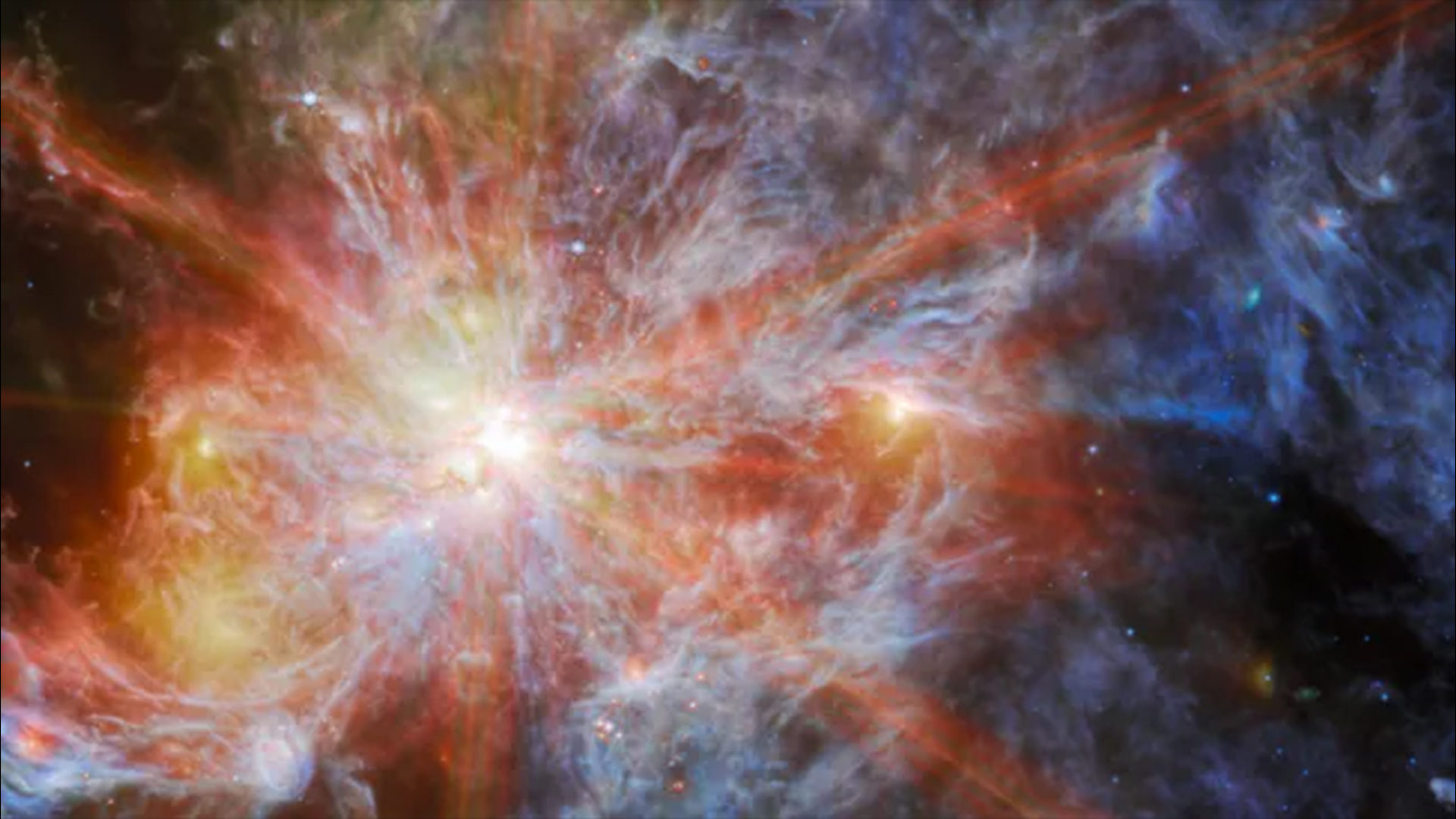
The James Webb Space Telescope (JWST) has discovered a handful of possible galaxies that could be among the earliest to ever exist.
Located 13.6 billion light-years away and just 200 million years after the Big Bang, the five galaxy candidates are the earliest ever detected, and likely some of the first to have formed in the ancient universe.
If confirmed by follow-up observations, the ancient galaxies will offer astronomers a test of their best theories of galaxy formation along with unique insights into how matter first coalesced across the cosmos. The researchers published their findings Nov. 26 on the preprint database arXiv, so they have not yet been peer-reviewed.
"According to the standard paradigm of structure formation, the same primordial fluctuations that gave rise to hot and cold spots in the cosmic microwave background (CMB) will eventually grow, collapse, and form the first galaxies during cosmic dawn, ushering in the epoch of first light," the researchers wrote in their study.
"These first galaxies have remained outside of our observational reach for decades," they added. Yet the JWST has changed that.
Cosmologists previously estimated that the first clumps of stars began to merge and form galaxies just a few hundred million years after the Big Bang.
Related: James Webb telescope discovers 'inside out galaxy' near the dawn of time
Then, just 1 to 2 billion years into the universe's life, current theories suggest that these early protogalaxies arrived at adolescence — forming into dwarf galaxies that devoured each other to grow into ones like our own.
But finding the exact timing of this process, and the speeds at which the earliest steps occurred, is challenging because the light from these galaxies is so faint, and the universe's expansion has dramatically stretched (or redshifted) their wavelengths out into the infrared spectrum.
Unlike its predecessor, the Hubble Space Telescope, JWST can detect light in the infrared spectrum, giving the telescope access to the first stages of the universe. But the light from our universe's extremely early epochs is still too dim to be detected on its own.
To get around this, the researchers behind the new observations — made as part of the Galactic Legacy Infrared Midplane Survey Extraordinaire (GLIMPSE) project — took advantage of a phenomenon known as gravitational lensing to magnify the distant light of these early galaxies.
As Einstein outlined in his theory of general relativity, gravity is the curving and distortion of space-time in the presence of matter and energy. This curved space, in turn, dictates how energy and matter move.
This means that even though light travels in a straight line, it can be bent and magnified by gravity. In this case, the galaxy Abell S1063 sits between the region they chose to study and our solar system, focusing the early galaxy's light so it can be viewed by telescopes.
By pointing JWST at this region of curved space and slowly collecting the light beaming in from behind it, the astronomers pushed the telescope to the limits of its capabilities, catching the first faint glimmers from the early galaxies.
If confirmed by further studies, these galaxy candidates will be younger than the earliest confirmed galaxy, JADES-GS-z14-0, by roughly 90 million years — placing them among the very first that could ever be formed. And the fact that they were all found within the same region of sky suggests that there could be many more of them out there.
So how did galaxies like these grow so quickly? Answers to the cosmic mystery remain elusive, but it's unlikely they will break our current understanding of cosmology. Instead, astronomers are toying with explanations that include the earlier-than-anticipated appearance of giant black holes, feedback from supernova explosions, or even the influence of dark energy to explain the rapid formation of the stars within them.







